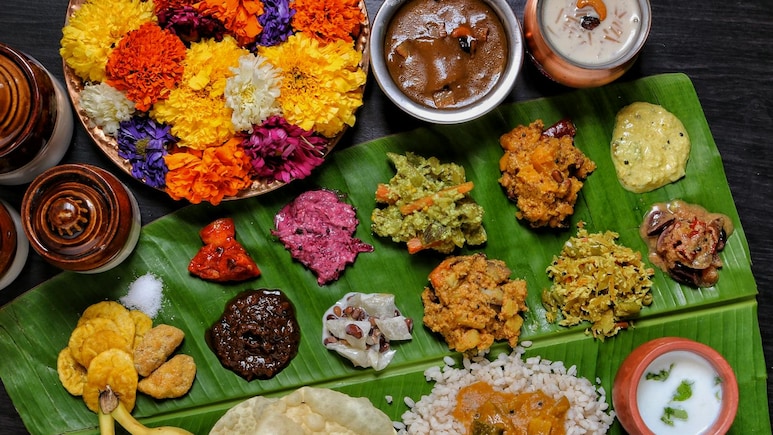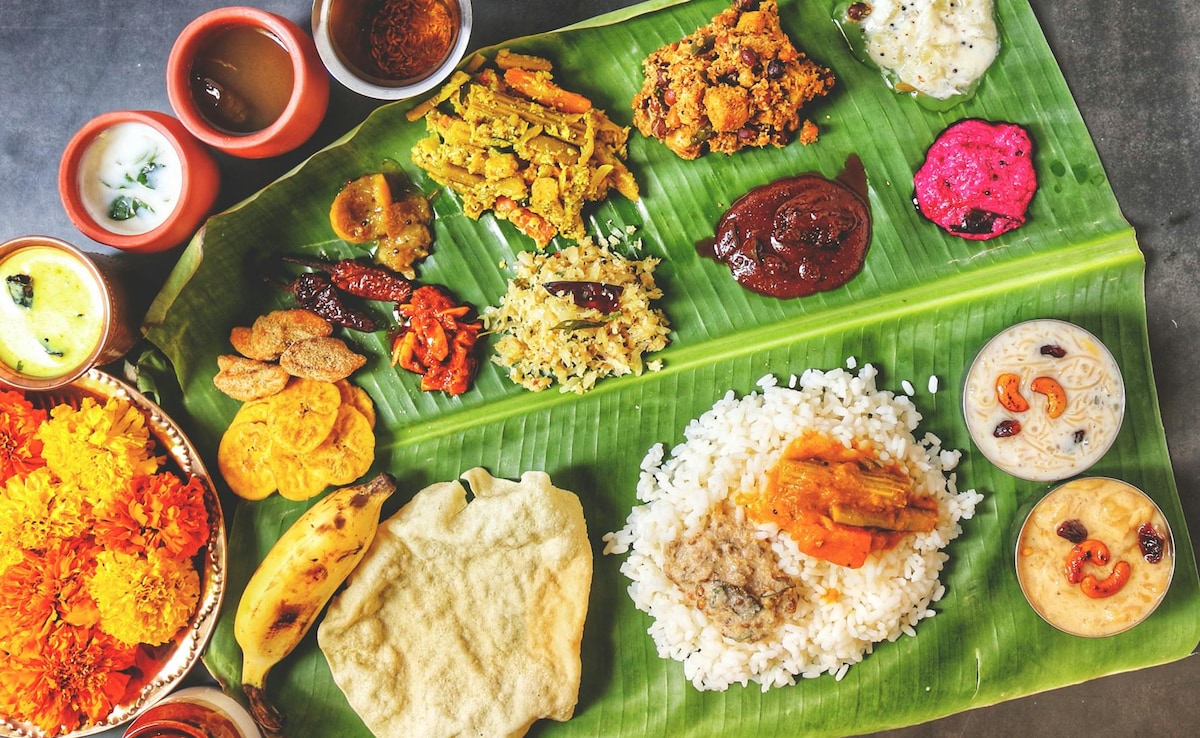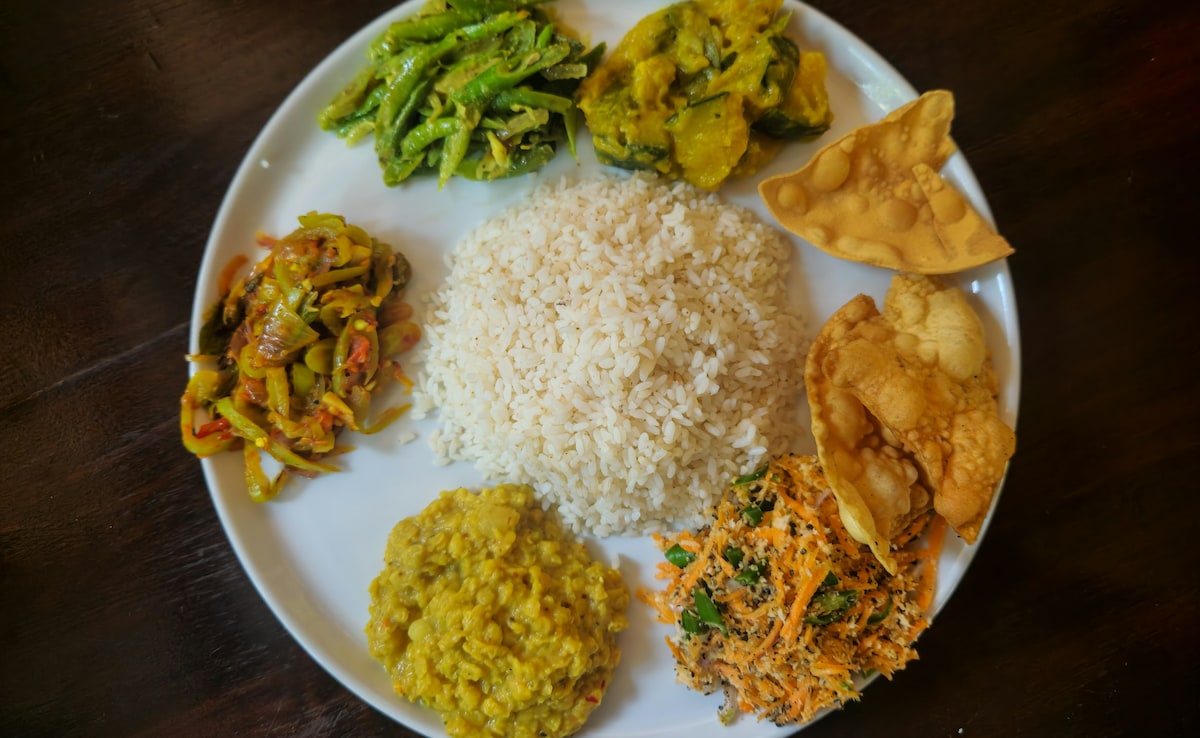
When Onam rolls around, Kerala's homes come alive with elaborate Onam sadhya or Onasadhya, a vibrant vegetarian banquet served on banana leaves with up to 64 dishes. Similarly, Bengali meals (traditional ones, not the commercially sold platters available today) unfold in carefully ordered courses, often starting with bitters or sour dishes before rich and sweeter components. While a sadhya is predominantly vegetarian, Bengali traditional meals start with vegetarian favourites and yet include at least one fish, poultry or meat dish. At first glance, these festive spreads look indulgent. But these elaborate spreads are actually built on centuries-old Ayurvedic principles designed to nourish, support digestion, and balance metabolism.
This is no accident. Ayurveda emphasises eating with awareness of taste (rasa), sequence, seasonality, and balance. Dishes in a sadhya or Bengali thali are cooked and served to align with these principles. For example, sweet dishes in sadhya nourish and prime digestion, while subsequent sour, pungent, or bitter items stimulate enzyme production and cleanse metabolic by-products. Bengali starters like neem begun or shukto consciously use bitter flavours to prep digestion in monsoon or summer.
All this science over rice and plantains, and yet, this science remains forgotten amidst festivities these meals are a part of. To remedy that, and to mark the 10-day Onam 2025 celebrations, let's unpack how these grand meals follow Ayurvedic science. Instead of just indulging in them, let's learn why the order of dishes matters, how six specific tastes are used, and what Indian readers can learn about healthy festive eating. Trust us, there's a health lesson hidden behind every ladle.
The Six Ayurvedic Tastes And Their Role
Ayurveda emphasizes six taste profiles, sweet, sour, salty, pungent, bitter, and astringent, as the cornerstone of digestion and nourishment. Each taste carries energetic qualities and influences doshic balance (vata, pitta, kapha) and digestive fire (agni). Balanced inclusion of these tastes in a single meal supports physiological harmony and mental wellbeing.

Photo Credit: Pexels
Ayurvedic Wisdom Behind Sadhya
Onam sadhya features staples like rice, parippu (lentil curry), sambar, avial, olan, kootu curry, and payasam. In fact, the sadhya is a staple celebratory meal served at most Malayali weddings, festive occasions, and of course, at temples. Ayurveda suggests that meals begin with sweet flavours, like sharkara varatti or jaggery-coated banana chips, as they are nourishing and grounding, helping kindle digestive fire (agni). These are followed by sour and salty curries (e.g., sambar or pickles) that stimulate appetite and digestion. Pungent spices in rasam and dals further support metabolism, while bitter or astringent ingredients in dishes like avial or certain pachadis cleanse the taste buds and stimulate digestive enzymes.
The logical progression, starting with grounding, moving through the stimulating, and ending with cleansing flavours, mirrors meal sequencing benefits supported by modern science: eating fibre or protein before or with considerable amounts of carbs slows glucose absorption and supports metabolic health.
Bengali Course-Style Meals: Tastes With Purpose
In Bengali tradition, meals or thalis usually have 5-6 courses, predominantly plant-based, but highlighting fish as a key part. These courses often begin with bitter or sour appetizers like shukto or neem begun, which awaken digestive enzymes and prepare the gut, especially during warmer seasons. The main dishes, rice, fish, lentils, vegetables, then provide nourishment, followed by sweets or yogurt, completing the six tastes. This reflects Ayurveda's seasonal and taste-based wisdom (e.g., bitter for cooling, pungent for stimulating).
The bitter dishes that kickstart a Bengali meal (and no Bengali kid ever grows up without eating them daily), though unusual, are Ayurvedic treasures. For example, the understated neem begun (fried neem leaves with eggplant and turmeric) cools the body, boosts immunity, and preps digestion, especially useful during hot or humid summers of Bengal. Following these bitters, sweet-savoury curries and rice help nourish and satiate. The combination of tastes-bitter, sweet, sour, salty, pungent, astringent-ensures deep nourishment, digestive support, and metabolic equilibrium.

Photo Credit: Unsplash
Why The Sequential Serving Matters
Meals like sadhya and Bengali traditional meals therefore follow a well-established sequence, and this sequence is strictly followed not only out of respect for rituals, but because they make sense as per Ayurveda. Ayurveda teaches us the order in which meal components are served aligns with the body's digestive priorities: we first warm the system and prepare agni, then stimulate digestion, and finally cleanse. Modern research backs this: clinical trials, like the one published in the journal Nutrients in 2020, using meal sequencing (non-carb foods before carbs) show better glycaemic control and greater weight management benefits.
Eating With Ayurveda: Key Takeaways For Readers
The fact that most people, however, tend to forget is that though many traditional Indian meal patterns and lifestyle practices emerge time and again during festivals like Onam or Navratri, they do not have the same impact that ancient Ayurvedic texts may have boasted of. This is primarily because modern lifestyles do not follow overall Ayurvedic patterns of ritucharya and dincharya any more-and they haven't for centuries.
So, when during festivals you do get a chance to eat a traditional sadhya or a proper Bengali course-style meal, don't expect magical health benefits to show up. Instead, if you do want to see long-term digestive benefits, it is best to eat clean, sequenced, seasonal meals all through the year. Here are some easy takeaways from Onam sadhyas and Bengali thalis that you could adopt throughout the year:
- Honor the six tastes: A balanced meal includes sweet, sour, salty, bitter, pungent, and astringent flavours, just like sadhya and Bengali thali do.
- Sequence impacts digestion: Start with bitter dishes, nourishing items, move through stimulating flavours from healthy carbs and fibre-rich foods, and end with astringent for cleansing. Opt for mildly sweet dishes compared to overly sweetened ones.
- Celebrate seasonality: Neem begun is for monsoon; lighter pachadis suit summer; avial comforts in cool weather. Take a cue from these examples, see what's locally available in your markets, and prepare simple food that is aligned with the body's changing needs.
- Use meal structure wisely: Even festive meals can be healthful if enjoyed slowly and with awareness of portion, flavour, and sequence.
Far from being dietary splurges, Indian festive meals like Onam sadhya and Bengali course-style meals are thoughtfully designed for digestive and metabolic wellness. Their sequence, tastes, seasonal attention, and ingredient choices are rooted in Ayurvedic health science, and modern research echoes their wisdom. So, the next time you're at a grand feast, remember: it's not just culture you're tasting, it's centuries of health and wellness strategy.
Disclaimer: This content including advice provides generic information only. It is in no way a substitute for a qualified medical opinion. Always consult a specialist or your own doctor for more information. NDTV does not claim responsibility for this information.
References:
1. Tiwari, S., & Gehlot, S. (2022). An Ayurvedic view on food (Ahara)-A review. Journal of Ayurveda and Integrative Medicine, 13(2), 100561.
2. Sethi, J., & Sethi, A. (2017). Best Ayurvedic Indian Thali: A healing meal for mind & body. International Journal of Complementary & Alternative Medicine, 6(2), 00173.
3. Imai, S., Kajiyama, S., Hashimoto, Y., et al. (2014). A review of recent findings on meal sequence: An attractive dietary approach to prevention and management of type 2 diabetes. Journal of Clinical Medicine Research, 6(6), 395-400.
4. Chatterjee, S., & Dey, S. (2021). Ancient Indian diet - A balanced diet for the healthy diversity of gut microbiota and management of asthma. Frontiers in Nutrition, 8, 646760.
5.Sharma, H., & Chandola, H. M. (2011). Ritucharya: Answer to the lifestyle disorders. Ayu, 32(4), 466-471.
Track Latest News Live on NDTV.com and get news updates from India and around the world

